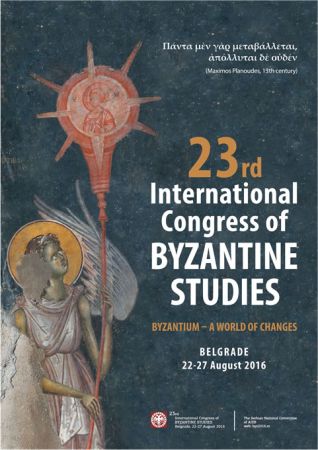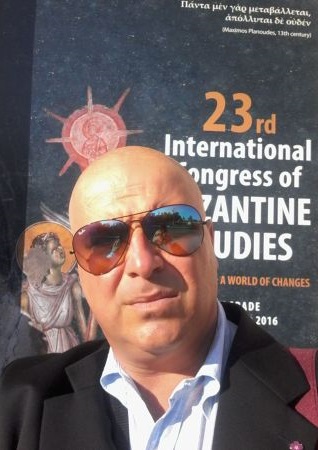Dr. sc. Vinicije B. Lupis održao je na 23. međunarodnom kongresu bizantskih studija (International Congress of Byzantine Studies) u Beogradu 22.-27. kolovoza 2016. predavanje pod naslovom “Byzantine Layers in the Reliquaries from the Cathedral Treasury of Dubrovnik”. Predavanje je održano u sklopu bloka predavanja Byzantine Artistic Tradition and the Western World. Mediterranean Domain. – Sažetak izlaganja
 |
 |
– 23rd International Congress of Byzantine Studies; Beogradu, 22.-27. kolovoza 2016.
– Sesija: Byzantine Artistic Tradition and the Western World. Mediterranean Domain
– Sažetak: Vinicije B. Lupis: Byzantine Layers in the Reliquaries from the Cathedral Treasury of Dubrovnik
Vinicije B. Lupis: Byzantine layers in the reliquaries from the Cathedral Treasury of Dubrovnik
The Cathedral Treasury in Dubrovnik is one of the wealthiest church collections in the Mediterranean in which Byzantine objects occupy a special place. The oldest reliquary in Dubrovnik belongs to a later period, namely to the 9th and 10th centuries. The reliquary of the True Cross, or so-called ‘gold staurothece,’ is the oldest and most important object in the Cathedral Treasury and was likely an imperial gift to one of the important cities in the western Eastern Roman Empire. It dates from the 10th century and at some point after the12th-13th century it was placed in a cross-shaped cavity in a silver, rectangular reliquary whose design is associated with the adrio-byzantine, 12th century style. A special place was reserved in the cathedral’s treasury for reliquaries of the Foot of St. Petrunjela and St. Domicila. The latter are decorated with elements taken from an older silver reliquary, which contained imperial portraits, apparently based on those found on the golden solidus of emperors Constantine VII Porphyrogennetos and Romanos I Lekapenos. The Byzantine emperor Constantine VII was the first to mention the existence of the relics of St. Pancras in Dubrovnik, and it is obvious that the original reliquary, which was kept in the church of St. Stephen in Dubrovnik, also originates from the same period.
Reliquaries from the church of St. Stephen and the Cathedral were the most valuable in the entire collection of reliquaries in Dubrovnik. According to local tradition, the arrival of the original head reliquary of St. Blaise took place during the reign of Byzantine Emperor Constantine VIII Porphyrogennetos (1025th to 1028th). The translation of the relics of St. Blaise to Dubrovnik confirms the importance of the city for Byzantine politics in the Adriatic area. The reliquary head of St. Blaise, which was restored in 1694 following damage caused by the great earthquake in 1667, kept its original form of a Byzantine imperial crown and was repaired with parts from other reliquaries. It was originally designed for a Latin city in the Byzantine ecumena, since the inscription is written in the Latin alphabet to imitate Greek letters. Another reliquary of the Hand of St. Simon the prophet with a ribbon bearing five medallions with images of St. Theodor also originates from 11th century. Byzantine artistic influence continues even after the definitive break with nominal Byzantine rule in Dubrovnik in 1204.
This paper will further examine other objects from Dubrovnik that can be related to late Komnenian and Palaeologan production. Certainly, one should mention the extremely valuable examples of Byzantine goldsmiths housed in the National Archives in Dubrovnik, such as the silver and gold seals of Michael II Komnenos Doukas, Despot of Epirus from 1251 and a chrysobull of the last Byzantine emperor, Constantine XI Dragases Palaiologos from 1451. This object marks the end of Byzantine artistic influence on the Dubrovnik goldsmith tradition.

 Institut društvenih znanosti Ivo Pilar Pilar
Institut društvenih znanosti Ivo Pilar Pilar



